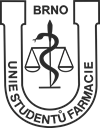Section of Pharmacognosy & Pharmacology
-
10:15 Hana Vespalcová
TRANSCRIPTOMIC PROFILING OF ASTHMA, ALLERGIES, AND ATOPIC ECZEMA AND THEIR MULTIMORBIDITY IN THE CZECH ADULT POPULATION
Authors: Hana Vespalcova 1, Barbora Rudzanova 1, Vojtech Thon 1, Jana Klanova 1, Ludek Blaha 1 and Ondrej Adamovsky 1
1 Research Centre for Toxic Compounds in the Environment (RECETOX), Faculty of Science, Masaryk University, Brno, Czech Republic
e-mail: hana.vespalcova@recetox.muni.cz
Key words: Allergies, Asthma, Atopic eczema, Multimorbidity, Transcriptomic analysis
Atopic eczema, asthma and allergies are widespread human diseases that often occur together in multimorbidity. However, the molecular signature of individual diseases differs at the gene expression level, the comorbidities remain understudied 1. Therefore, we analyzed gene expression data in order to explore disease-related deregulated gene networks, investigate novel gene biomarkers and explore deregulated metabolic pathways for individual diseases and their comorbidities. To investigate altered gene expression and pathways in immune-mediated diseases, we performed a transcriptomic analysis of WBCs on 267 participants in YA CELSPAC cohort study. We statistically compared gene expression profiles of participants with individual diseases or their comorbidities with healthy population using linear models. Additionally, we performed enrichment analysis to evaluate disease-specific impact on metabolic pathways. We identified about 40 differentially expressed genes in participants with multimorbidity. 13 of these are associated with immunological processes. Number of genes involved in regulation of the immune system were found to be altered in all tested groups. The enrichment analysis revealed changes in groups with diseases and their comorbidities in immune-related pathways such as NK and T cell differentiation and cytokine production. Our results, specifically the discovery of potential disease biomarkers, is relevant for further clinical and diagnostic investigations.
Authors thank the RECETOX RI (No LM2023069) and BBMRI.cz (No LM2023033), the project CETOCOEN EXCELLENCE (No CZ.02.1.01/0.0/0.0/17_043/0009632) and Cetocoen Plus (CZ.02.1.01/0.0/0.0/15_003/0000469) financed by the Ministry of Education, Youth and Sports further to European Union’s Horizon 2020 research and innovation program (No 857560).
References
1 Lemonnier N, Melén E, Jiang Y, et al.: A novel whole blood gene expression signature for asthma, dermatitis, and rhinitis multimorbidity in children and adolescents. Allergy. 2020, 75:3248–3260.
-
10:30 Daniela Rubanová
DEXAMETHASONE BASED POLYMER THERAPEUTICS FOR TREATMENT OF RHEUMATOID ARTHRITIS
Authors: Daniela Rubanová1, 2, Josef Bryja1, 2, Svitlana Skoroplyas1, 2, Alena Libánská4, Eva Randárová4, Tomáš Etrych4, Lukáš Kubala1, 2, 3
1 Institute of Biophysics of the Czech Academy of Sciences
2 Department of Experimental Biology, Faculty of Science, Masaryk University
3 International Clinical Research Center, St. Anne's University Hospital
4 Institute of Macromolecular Chemistry of the Czech Academy of Sciences
e-mail: 436905@mail.muni.cz
Key words: rheumatoid arthritis, dexamethasone, HPMA copolymer
Rheumatoid arthritis (RA) is a chronic inflammatory autoimmune disease caused by alteration of immune system1. Current therapy includes various approaches, however it is often connected with various side effects. The conjugation of the drug to nano-sized delivery system improves its therapeutic outcome2. Therefore, we aimed to evaluate the biological effects of nanopolymer drug conjugates based on biocompatible N-(2-hydroxypropyl) methacrylamide carrying glucocorticoid dexamethasone (DEX) attached by a stimuli sensitive spacer. Murine peritoneal macrophages RAW 264.7 activated by lipopolysaccharide were used for in vitro evaluation. Adjuvant induced arthritis mouse model was used for evaluation of pharmacokinetics and therapeutic efficacy. Acute toxicity was not observed for any compound and all of them decreased production of pro-inflammatory mediators (NO and IL-6) by activated cells. In vivo imaging showed increased accumulation of nanopolymer conjugate in arthritic mouse paw. All tested polymer conjugates showed better therapeutic efficacy in comparison with free DEX. Overall, the therapeutic potential of DEX was retained after its conjugation to polymer and even higher than for free DEX. Therefore, the conjugation of DEX to nanopolymer carrier by stimuli sensitive spacer is a suitable strategy for improvement of RA therapy.
Animal experiments were approved by the institutional Animal Care and Use Committee (protocol n.52/2020 from 15th June 2020).
This study was supported by the Ministry of Health of the Czech Republic (project NU20-08-00255). Daniela Rubanová is a Brno Ph.D. Talent Scholarship Holder – Funded by the Brno City Municipality.
References
1 Smolen, JS.; Aletaha, D.; Barton, A.; Burmester, GR.; Emery, P.; Firestein, GS.; Kavanaugh, A.; McInnes, IB.; Solomon, DH.; Strand, V.; Yamamoto, K. Nat Rev Dis Primers. 2018, 4, 18001.
2 Jeong, M.; Park, JH. Mol Pharm. 2021, 18, 539.
-
10:45 Ahmet Davut Aksu
VALIDATION OF LANGENDORFF PARAMETERS ON REPERFUSION INJURY WHILE TESTING THE RELATIONSHIP BETWEEN CORONARY FLOW AND ARRHYTHMIA RATE
Authors: Ahmet Davut Aksu1, Gerardo Enrique Abarca Ríos2, Jana Hložková1,4, Roman Panovský3,4,5, Milan Sepši5,6, Peter Scheer1,4
1 Department of Pharmacology, Faculty of Pharmacy, Masaryk University, Brno, Czech Republic
2 Department of Pharmacology, Faculty of Pharmacy, University of Costa Rica
3 1st Department of Internal Medicine and Cardioangiology, St. Anne´s University Hospital, Brno
4 International Clinical Research Center, St. Anne´s University Hospital, Brno, Czech Republic
5 Faculty of Medicine, Masaryk University, Brno, Czech Republic
6 Department of Internal Cardiology Medicine, University Hospital Brno, Brno, Czech Republic
e-mail: a.davutaksu@gmail.com
Key words: isolated heart, ventricular fibrillation, regional ischemia, rat model
The Langendorff isolated heart system has been used for many years in the scope of various myocardial studies. In our research, we aimed to test the role of external factors on the induction of ventricular arrhythmias in ex vivo rat hearts. All procedures and animal experiments were performed in full compliance with the ARRIVE and the European Community Council Directive (2010/63/EU) for Protection of Vertebrate Animals Used for Experimental and other Scientific Purposes guidelines. In this study, a total number of 12 male Wistar albino rats were used and divided into two groups according to body weight. The animals were anaesthetised using 2.5% isoflurane, and the anaesthesia was deepened until the loss of pedal reflexes. Later on, hearts were immediately excised and inserted into the Langendorff apparatus. K-H solution was used for the perfusion, and the system was set to 38 oC with constant oxygenation (95 O2 / 5 CO2) and pH set to 7.4. In the protocol, 40 minutes of regional ischemia was applied to LAD, followed by 5 minutes of reperfusion. 0,025 mg/ml adrenaline infused with 2.5 ml/hr rate during the last 5 minutes of ischemia, and the infusion rate is increased to 5 ml/hr during the reperfusion period. Lastly, the coronary flow was measured during the stabilization (CF1) and reperfusion (CF2) period for further examination. Depending on our results, group 1 rats with ± 201 g body weight with an average of 0,93 g of heart weight had 13 ml/min. CF1 and 16 ml/min. CF2. Group 1 rats showed 66 % of induction of ventricular fibrillation. Rats with ± 586 g body weight with an average of 2,29 g of heart weight had 20 ml/min. CF1 and 8 ml/min. CF2. Group 2 rats showed 66 % of induction of polymorphic ventricular tachycardia with no occurrence of fibrillation. In both groups, the induction of ventricular arrhythmias was 100 %. We can conclude that the hearts of rats with a smaller body weight showed a higher coronary flow and, as a result, a greater incidence of polymorphic ventricular tachycardia was recorded. In contrast, the hearts of rats with a higher body weight had a lower coronary flow and, as a result, a higher incidence of ventricular fibrillation.
This research was funded by the European Regional Development Fund-Project ENOCH (No. CZ.02.1.01/0.0/0.0/16_019/0000868). FNUSA-ICRC Animal Centre facilities were used in the research.
-
11:00 Sandra Thalerová
EVALUATION OF ALTEPLASE-INDUCED THROMBOLYSIS IN HUMAN VS RAT PLASMA: AN IN VITRO STUDY
Authors: Sandra Thalerová1,2,3, Michaela Pešková2,3, Peter Scheer1,4, Jana Hložková1,4, Eliška Brhelová1, Patrícia Kittová1,2,5, Jan Víteček1,2,5, Lukáš Kubala1,2, Robert Mikulík1
1 International Clinical Research Center, St. Anne’s University Hospital Brno
2 Department of Immune System, Institute of Biophysics of the Czech Academy of Sciences
3 Department of Biochemistry, Faculty of Science, Masaryk University
4 Department of Pharmacology and Toxicology, Faculty of Pharmacy, Masaryk University
5 Department of Biochemistry, Faculty of Medicine, Masaryk University
e-mail: sandra.thalerova@fnusa.cz
Key words: thrombolysis, in vitro, clot, human vs rat, stroke
Experimental stroke studies are important for development of new thrombolytics, but it is not clear if results obtained in rat plasma can be directly translated to humans.1 Therefore, in vitro model was used to compare alteplase-induced thrombolysis in human vs rat plasma.
Static in vitro model with semi-synthetic clots was used. Clot lysis was induced by alteplase at clinically relevant concentration (1.3 mg/L) and at concentrations 10-fold lower to 50-fold higher. Efficacy was assessed by clot mass loss and red blood cell release.
Alteplase at clinically relevant concentration induced non-inferior thrombolysis in rat plasma compared to human plasma (27.9±5.1% vs 44.6±7.0%, diff. 16.7%, 95%CI -11.3-22.2%). In both plasmas, the efficacy of 0.13 mg/L alteplase was inferior to 1.3 mg/L (human: diff. 10.7%, 95%CI -5.2-16.2%; rat: diff. 17.3%, 95% CI -11.7-22.9%). Whereas 1.3 mg/L was non-inferior to 13 mg/L (human: diff. 4.7%, 95%CI 0.8-10.2%; rat: diff. 9.3%, 95% CI -3.6-14.5%), and similarly for further increase of alteplase to 65 mg/L.
Alteplase induced thrombolysis showed similar dose dependency in both plasmas. Hence, the model with rat plasma is sufficiently sensitive and translatable to humans.
The study was supported by the European Regional Development Fund – Project INBIO (nr. CZ.02.1.01/0.0/0.0/16_026/0008451) and Ministry of Health of the Czech Republic, grant nr. NU21-08-00510.
References
1 (a) Mergenthaler, P.; Meisel A. Do stroke models model stroke? Dis Model Mech. 2012, 5, 6. (b) Dirnagl, U.; Fisher, M. J Cereb Blood Flow Metab. 2012, 32, 6.
-
11:15 Mária Gáborová
STRUCTURAL ANALYSIS OF DITERPENOIDS ISOLATED FROM THREE PLECTRANTHUS SENSU LATO SPECIES
Authors: Mária Gáborová1, Máté Vágvölgyi2, Attila Hunyadi2, Szabolcs Béni3, Renata Kubínová1
1 Department of Natural Drugs, Faculty of Pharmacy, Masaryk University, Brno, Czech Republic
2 Institute of Pharmacognosy, Faculty of Pharmacy, University of Szeged, Szeged, Hungary
3 Department of Pharmacognosy, Faculty of Pharmacy, Semmelweis University, Budapest, Hungary
e-mail: maria.gborov@gmail.com
Keywords: diterpenoid, NMR, 2D NOESY, Plectranthus, spirocoleon
Plectranthus sensu lato (Lamiaceae) is a large and widespread genus including plants of medicinal interest which have been traditionally used in the treatment of a vast array of ailments of digestive tract, respiratory tract and skin.1,2 Extensive studies on its secondary metabolites revealed phenolic compounds and terpenoids as major phytoconstituents.2,3 Among them, mainly diterpenoids gathered considerable interest due to their remarkable structural diversity arising from the ability to produce cyclic structures and further oxygenation of the diterpenoid skeleton. Many of them were reported to have promising biological effects, especially antimicrobial, antiprotozoal, and cytotoxic activities.2,3
Our phytochemical investigation of the methanolic extracts of the aerial parts of C. forsteri 'Marginatus', P. ciliatus, and C. comosus resulted in the isolation of 14 oxygenated diterpenoids of abietane, ent-kaurane, and ent-clerodane classes. Three of them were isolated from a natural source for the first time and the structure of one known compound was revised. The structures of diterpenoids were established by comprehensive data analysis including high-resolution electrospray ionization mass spectrometry, one-dimensional and two-dimensional nuclear magnetic resonance spectroscopy, and electronic circular dichroism spectroscopy.
The study was supported by Grant Agency of Masaryk University (MUNI/A/1688/2020) and the NKFIH, Hungary (K-134704).
References
1 Paton, A.J. et al. Phytokeys 2019, 129, 1-158.
2 Lukhoba, C.W.; Simmonds, M.S.J.; Paton, A.J. J. Etnopharmacol. 2006, 103, 1-24.
3 Gáborová, M.; Šmejkal. K.; Kubínová, R. Molecules 2021, 27, 166.
-
12:00 Michal Rybnikář
ISOLATION AND IDENTIFICATION OF LIGNANS FROM SCHISANDRA CHINENSIS FRUIT
Author: Michal Rybnikář
1 Department of Natural Drugs, Faculty of Pharmacy, Masaryk University, Czech Republic
e-mail: hafanek@centrum.cz
Key words: Schisandra chinensis, isolation, separation, identification, lignans
Introduction: Schisandra chinensis belongs to 50 basic herbs of Chinese medicine1. It is a deciduous, shrub-like, dextrorotatory creeper without tendrils. Dibenzocyclooctadiene lignans are the most important active substances from S. chinensis., which have a biological and pharmacological activity. The lignans of schisandra are genus specific.
Lignans consisting of two phenylpropane units that are linked through the central carbons (β) of the propane chain 2. Phytochemical works have so far described several tens of schisandra lignans, which differ from each other both in the conformation of the polycyclic system and in the presence of different substituents, both on the biphenyl and on the cyclooctadiene ring.
Lignans have confirmed adaptogenic and antiphlogistic effects, central nervous system stimulation, antioxidant and hepatoprotective effects and anticancer potential.
Aims: Experimental part focuses on the analysis, separation, isolation, and identification of lignans from chloroform fraction of methanolic extract of S. chinensis fruit, which is rich source, using selected chromatographic methods, mass spectrometry and NMR spectroscopy.
Methods: In the experimental part, chloroform fraction of methanolic extract from one kilogram S. chinensis fruit was processed using column chromatography.
Obtained fractions were analyzed and separated using chromatographic methods (TLC, HPLC, preparative HPLC) and obtained compounds were subsequently analyzed by NMR spectroscopy and mass spectrometry.
Results: From chloroform fraction, 283 fractions were obtained by column chromatography, combined according to TLC and HPLC analysis. 13 combined and selected fractions were processed by preparative HPLC to obtain 11 substances, which were identified by comparison with previously obtained compounds or identified by NMR and MS. Up to now, deoxyschisandrin, gomisin B, gomisin C, and wuweizisu C were identified..
Conclusions: Substances were identified and lignans, which have potentially bioactivity to be tested.
Author´s CV: Michal Rybnikář is a PhD student at the Department of Natural Drugs, Faculty of Pharmacy, Masaryk University
Supervisor: prof. PharmDr. Karel Šmejkal, PhD.
References:
1 Wong M. La Médecine chinoise par les plantes. Le Corps a Vivre series (1976). Éditions Tchou.
2 Slanina, J. Biologická a farmakologická aktivita lignanů, Chemické listy, 2000, 94, 111-116.
-
12:15 Ademola Adekoya
PRELIMINARY PHYTOCHEMICAL SCREENING, CYTOTOXICITY, AND ANTI-INFLAMMATORY POTENTIALS OF XYLOPIA AETHIOPICA (WHOLE FRUIT)
Authors: Ademola Ezekiel Adekoya1, Jakub Treml2, Karel Smejkal1
1 Department of Natural Drugs, Faculty of Pharmacy, Masaryk University
2 Department of Molecular Pharmacy, Faculty of Pharmacy, Masaryk University
e-mail: adekoyaa@pharm.muni.cz
Keywords: Xylopia aethiopia, Anti-inflammatory, Chromatography, X-blue cells, NF-kB
Xylopia aethiopica is a sweet smell-producing tree with a trunk height of about 30 m and a width of almost 70 cm. It is indigenous to the savanna areas of West, Central, and Southern Africa.1 Ethnobotanically, almost all parts of X. aethiopica are useful in treating some ailments.2 Therefore, this study aimed to preliminarily investigate the fractional phytochemical composition of the whole dried fruits of X. aethiopica and examine cytotoxicity, the anti-inflammatory and other biological activities of the various fractions of plant extract in human leukemic THP-1 (X-blue) cells, a drive which could be important in the discovery of active ingredients.
The dried whole fruits were pulverized. Cold maceration was done, and the filtrates were concentrated by a rotary evaporator. Liquid-liquid separations were done using 90% methanol with different organic solvents to obtain n-hexane, chloroform, ethyl acetate and aqueous fractions, respectively. The cytotoxicity and anti-inflammatory activities of the four fractions were carried out. UV analytical HPLC was used to examine the possible phytochemicals in the fractions. Our results showed cellular viabilities ranging from 65.5% to 100% with the n-hexane and chloroform fractions having the highest and the least viabilities respectively. The anti-inflammatory assay showed the lowest level of inflammation in cells treated with chloroform fraction. This fraction was subjected to column chromatography. The analysis of the chemical compositions of the various fractions by UV analytic HPLC, ELSD HPLC, preparative HPLC, nuclear magnetic resonance (NMR) and structural elucidation is ongoing. The cytotoxicity, anti-inflammatory and other biological activities of the fractions are ongoing as well. The whole fruit of X. aethiopica could house some important compounds beneficial against some diseases.1
References
- Earnest, “Xylopia Aethiopica: A Review of its Ethnomedicinal, Chemical and Pharmacological Properties,” vol. 4, pp. 22–37, 2014.
- Orwa, A. Kindt, and R. Jamnadass, “R. and Simons, A. 2009. Agroforestree Database: a tree reference and selection guide ion 4.0,”. 2009.
-
12:30 Polina Shpet
PRENYLATED PHENOLICS AS MODULATORS OF CELLULAR COMMUNICATION
Authors: Polina Shpet1, Karel Šmejkal1, Pavel Babica2
1 Department of Natural Drugs, Faculty of Pharmacy, Masaryk University
2 RECETOX, Faculty of Science, Masaryk University
e-mail: 461298@mail.muni.cz
Key words: Prenylated Phenolics, Gap-Junction Intercellular Communication, In Vitro Assessment, 3D Tumor Spheroids, Antiproliferative Effects
Introduction: Prenylated phenolics are secondary plant metabolites with many impressive properties, such as strong antioxidative and anti-inflammatory activities. Moreover, the anticancer effects have been documented for several plant phenols.1 One of the possible modes of action of these compounds can be via renewal gap-junction intercellular communication (GJIC). GJIC plays a significant role in the maintenance of tissue homeostasis. Consequently, dysregulation of GJIC has been linked to various pathophysiological conditions and diseases, including carcinogenesis.2 Recently, a variety of structurally different prenylated phenolics from plant species Paulownia tomentosa, Morus alba, and Morus nigra were successfully isolated at the Department of Natural Drugs (DND). In collaboration with RECETOX, the effects of isolated phytochemicals are investigated. Preliminary data obtained from the previous research show that certain compounds have potent bioactivity to restore GJIC in tumorigenic rat liver cell line WB-ras in vitro.
Aims: The research should (1) expand the current knowledge about the effects of prenylated phenolics on GJIC and (2) investigate in more detail their ability to attenuate cell proliferation, migration, or tumor formation. Thereby, in vitro assessment of GJIC could (3) be effectively utilized in drug discovery and (4) propose appropriate drugs containing plant-derived chemicals to individuals with a high risk of cancer.
Methods: For in vitro assessment of GJIC, multiparametric scalpel loading-dye transfer assay (mSLDT) has been chosen, followed by fluorescence microscopy with automated image analysis. The cell-based screening will be conducted on 2D (monolayer) and 3D (tumor spheroids) in vitro models using WB-ras cell line. 3D cell models better mimic tumor-like microenvironment and pathological conditions. The most active compounds will be further investigated in vitro using secondary assays targeting other cancer hallmarks.
References
- Ahmad GM, Abu Serie MM, Abdel-Latif MS, Ghoneem T, Ghareeb DA, Yacout GA. Scientific Reports 2023 13:1. 2023;13(1):1-16.
2. Carruba G, Cocciadiferro L, Bellavia V, et al. Ann N Y Acad Sci. 2004;1028(1):202-212.

This study is supported by Ministry of Health of the Czech Republic, grant nr. NU21-08-00510. All rights reserved
-
12:45 Marie Komárková
CHARACTERISATION OF BACTERIOPHAGES WITH THERAPEUTIC POTENTIAL AGAINST HEALTHCARE-ASSOCIATED AND MULTIDRUG-RESISTANT PSEUDOMONAS AERUGINOSA
Authors: Marie Komárková1, 2*, Martin Benešík1, 2, Kateřina Rosíková2, Tibor Botka1, Lucie Valentová3, Pavel Plevka3, Milada Dvořáčková4, Filip Růžička4, Roman Pantůček1
1Department of Experimental Biology, Faculty of Science, Masaryk University, Brno
2FAGOFARMA s.r.o., Prague 2 Vinohrady
3Central European Institute of Technology, Masaryk University, Brno
4Department of Microbiology, Faculty of Medicine, Masaryk University, Brno
e-mail: mkomarkova94@gmail.com
Keywords: bacteriophages, phage therapy, Pseudomonas aeruginosa, antibiotic resistance, Czech wastewater
The occurrence of multiple drug-resistant Pseudomonas aeruginosa is increasing. Due to this fact, antibacterial therapy by bacterial viruses (i.e., phage therapy) can be a valuable alternative to antibiotics. In this study, we focus on the possibility of phage isolation from Czech wastewater and their therapeutic potential for the treatment of P. aeruginosa infections.
Three pseudomonal phages were isolated from samples of Czech wastewater. According to transmission electron microscopy and whole genome sequencing, these isolates were members of the Pbunavirus genus. We assessed the lytic effect of these phages on 176 P. aeruginosa isolates and compared them with the commercial phage cocktail Bakteriofag Pseudomonas aeruginosa (lot. No. H6, MicroGen).
The effectivity of isolates against pseudomonal strains was 35.2 to 41.6 %, less than in the case of the commercial phage cocktail, which was active against 44.9 % of strains. Nevertheless, 57.4 % of assessed pseudomonal strains were sensitive against at least one isolated phage.
In vitro susceptibility testing showed that potentially therapeutically applicable bacteriophages can be isolated from Czech wastewater and are effective against P. aeruginosa antibiotic-resistant strains.
The study was supported by the project MUNI/A/1287/2022 and by the National Institute of Virology and Bacteriology project (Programme EXCELES, ID Project No. LX22NPO5103) funded by the European Union - Next Generation EU.













